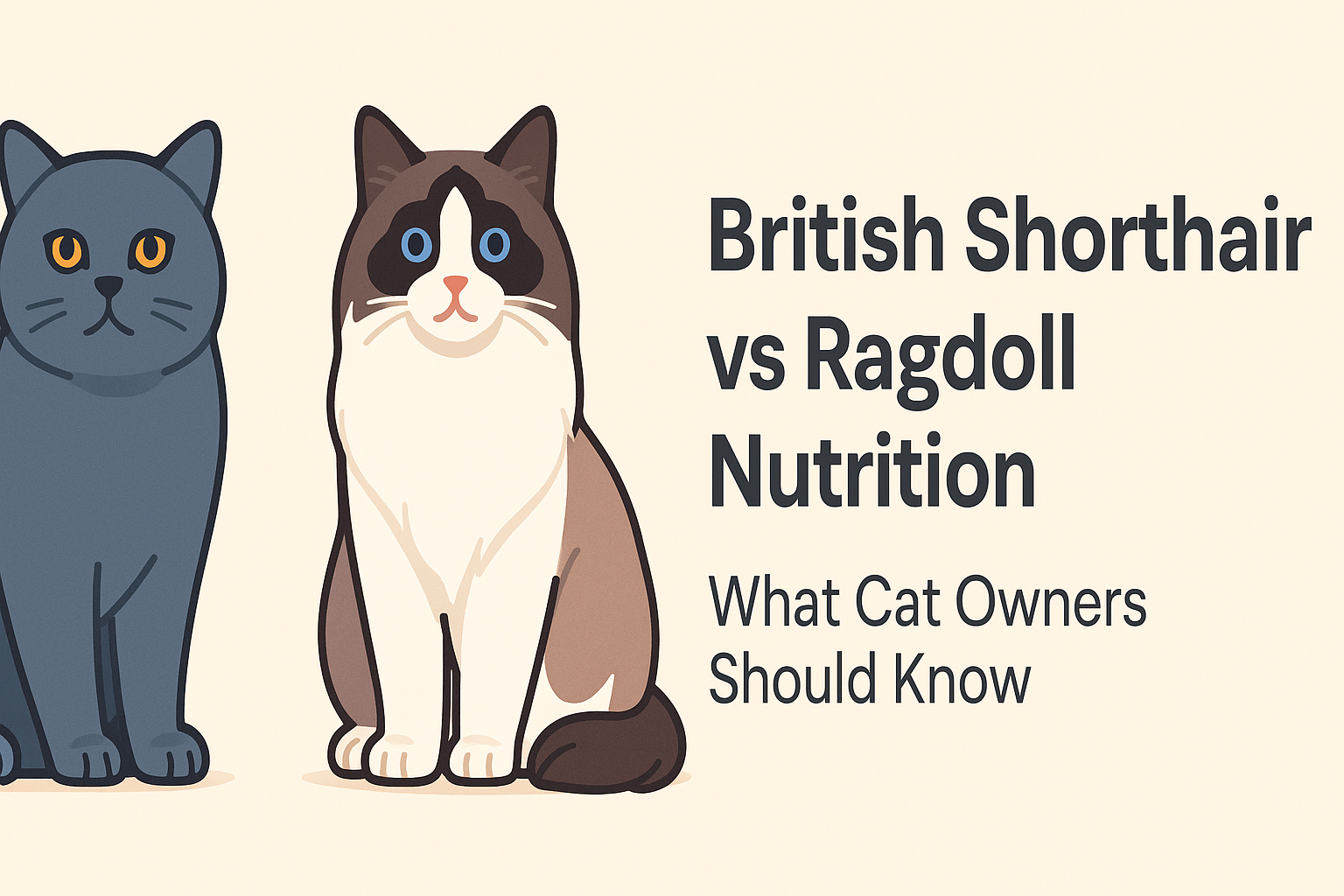
British Shorthair vs Ragdoll Nutrition: What Cat Owners Should Know
British Shorthair vs Ragdoll Nutrition: What Cat Owners Should Know
Not all cats eat alike. Just as people have different dietary needs, cat breeds vary in their metabolism, activity levels, and health concerns. Two of the most popular breeds in Europe—the British Shorthair and the Ragdoll—require very different nutritional approaches. Understanding these differences helps cat owners make better food choices and keep their feline companions healthy and happy.
British Shorthair Cats: Stocky and Low-Energy
Breed Traits:
British Shorthairs are famous for their plush coats, round faces, and calm, laid-back nature. They’re affectionate but not overly active, which means their metabolism is generally slower than more energetic breeds.
Nutritional Focus:
- Weight Control: Because they can be prone to weight gain, meals should be portion-controlled and lower in fat.
- High-Quality Protein: Easily digestible proteins (like chicken or turkey) help maintain lean muscle without excess calories.
- Heart & Joint Health: This breed may develop joint problems due to their stocky build. Omega-3 fatty acids and taurine are beneficial.
- Hair & Coat: Their thick coat needs support from Omega-3 and Omega-6 fatty acids, as well as vitamins for skin health.
Key Tip: Stick to scheduled feeding times rather than free-feeding to prevent obesity.
Ragdoll Cats: Large and Gentle Giants
Breed Traits:
Ragdolls are big, affectionate cats known for their docile temperament. They’re often more active than British Shorthairs but still have a calm personality. Their size means they require more calories and nutrient-dense meals.
Nutritional Focus:
- Higher Protein Intake: Ragdolls need sufficient protein to support muscle mass in their large frames.
- Joint Support: Due to their size, they benefit from joint-supporting nutrients such as glucosamine and chondroitin.
- Balanced Calories: While they need more energy than British Shorthairs, overfeeding can still lead to obesity.
- Coat Care: With their semi-long silky fur, Ragdolls require nutrients for skin and coat health, including Omega fatty acids and biotin.
Key Tip: Divide meals into smaller portions throughout the day to prevent overeating and maintain steady energy levels.
Side-by-Side Nutrition Comparison
| Feature | British Shorthair ? | Ragdoll ? |
|---|---|---|
| Energy Level | Low | Medium |
| Metabolism | Slower | Moderate |
| Main Concern | Weight gain, joints | Muscle maintenance, joints |
| Protein Needs | Moderate, easily digestible | High, nutrient-dense |
| Coat Care | Thick, plush – needs Omega 3 & 6 | Silky semi-long – needs Omega 3, 6, biotin |
| Feeding Style | Strict portions, no free-feeding | Small, frequent meals |
What Cat Owners Should Do
- Choose breed-appropriate diets (many premium pet food brands now offer breed-specific formulas).
- Pay attention to feeding schedules—consistency matters more than occasional treats.
- Monitor weight regularly to catch early signs of obesity or malnutrition.
- Work with your vet for customized nutrition advice, especially if your cat has allergies or chronic health conditions.
Final Thoughts
British Shorthairs and Ragdolls are both wonderful companions, but their nutritional needs aren’t identical. By tailoring your cat’s diet to its breed-specific traits, you support a healthier, longer, and happier life.
At FAMMO.ai, we believe every cat deserves a meal plan that’s as unique as they are. Our AI-powered system creates personalized nutrition recommendations based on breed, lifestyle, and health goals—so you don’t have to guess what’s best for your cat.